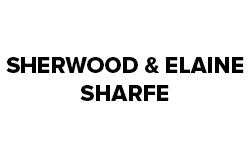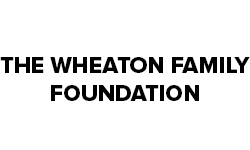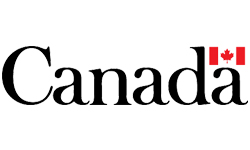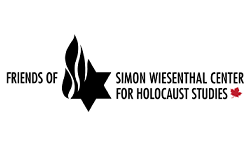GRADE 2 CITIZENSHIP STUDIES LIFELONG LEARNING CITIZENS
Part A: Curricular Connections and Background
BROAD AREA OF CITIZENSHIP
Lifelong Learning Citizens understand the dynamics of change and seek information about issues so they can act as engaged and responsible citizens. This area of citizenship study develops student’s skills, attitudes, and knowledge to assist them in understanding change and the impact that change has on individuals, homes, schools, and the community. Lifelong learning citizens understand that the world is constantly shifting and everyone continues to learn to adjust to new situations.
Students are asked to make meaning of matters explored and consider their response as active citizens, so awareness of the processes of critical thinking are fundamental to developing an accurate understanding of the issues.
DESIRED RESULTS OF CITIZENSHIP STUDY
The far-reaching effects of diversity expand from the individual to the community and beyond. Students will begin to understand the range of reactions that diversity creates in citizens. Students will continue to develop and refine the impact that diversity has on the development of differing viewpoints.
Students will further develop their understanding of how past events influence current beliefs and practices. They will extend their study of commitments made in the treaties and try to identify how those promises impact First Nations and Métis communities today.
Understanding the influence of choice on actions and behaviours continues. Students are asked to reflect on their activities and personal choices to determine the effects of their choices in the world. They will further explore change processes in an effort to understand how to implement personal change and support behavioural change in others.
ENDURING UNDERSTANDINGS OF CITIZENSHIP STUDY
Grade 2 students will examine how history has impacted and contributed to the development of current communities. Students will begin to understand the various effects of historical events on the development of their community and province including the impact of Treaty negotiations and First Nations and Métis people on their community. Finally students will further examine their present behaviours to understand how their actions affect others and begin to initiate personal change.
- Enduring understandings are the big ideas that stimulate thinking, guide the inquiry and are linked to outcomes.
- Essential questions point to the “big ideas’ in the inquiry and should be considered and reconsidered as the inquiry progresses.
- Answers to these questions form the evidence of learning at the end of study.
Students will use information to understand that:
- Actions, behaviours, and relationships are learned and affected by the past.
- Events and ideas from the past influence the present and can influence and serve as models of how to live as a contributing citizen.
- People develop rules so that we can live together peacefully.
- Rules have differing levels of impact so people who make rules need to consider the individual good and common good.
- Diversity can have a variety of impacts and can impact points of view.
- Individuals have the power to affect others and make a difference.
- Canada has a long relationship with First Nations Peoples through treaty relationships.
- Decisions have far-reaching effects, so it is important to think about the choices we make.
- Active participation leads to belonging and symbols can support belonging;
- People are connected to each other and to their environment and have a responsibility to take care of the world.
Throughout the year of study, students are learning that models, multidimensional and two dimensional, can represent real things.
KNOWLEDGE AND SKILL DEVELOPMENT
Students will:
- Practice different steps and processes to solve problems
- Consider how present actions will affect future choices
- Consider the impact of culture on behaviours and worldview
- Become aware of their thinking
- Consider the perspectives of others when trying to understand behaviours.
ESSENTIAL QUESTIONS
- How are present events related to past events?
- How does the past influence your present? Your future?
- What is my behaviour saying about what I think?
- Is my behaviour planned or am I reacting?
Essential Questions are open-ended questions that are continually revisited, encompass concepts that students will explore throughout the unit of study, form the evidence of understanding and frame the assessment at the end of the study.
CURRICULUM OUTCOMES AND INDICATORS
Outcomes: Sask. Curriculum/Student Friendly
Students will:
IN2.2
Create a representation of the diversity of cultural groups in the local community/understand the different groups of people who make up their community.
Indicators:
- Describe diverse characteristics within the school and local communities, and diverse similarities within and between diverse groups.
- Retell the shared experiences and stories of members of the local community experienced through active listening, viewing, and reading of stories in various formats.
- Identify the significance of a variety of cultural traditions, festivals, and celebrations in the school and local communities.
- Describe ways in which diverse individuals and groups contribute to the well-being of the local community (e.g., store keepers, medical practitioners, law enforcement personnel, school support workers, spiritual or faith leaders, artisans, trades people, bus drivers, community maintenance workers).
RW 2.2
Analyze various worldviews regarding the natural environment/understand how worldview impacts the use of the natural environment.
Indicators:
- Investigate traditional First Nations worldviews of the relationship between humanity and the environment.
- Describe traditional western European worldviews of the relationship between humanity and the environment.
- Investigate traditional Métis worldviews of the natural environment.
- Assess worldviews of how to achieve balance and harmony.
- Describe current worldviews in the community of the relationship between humanity and the natural environment.
DR2.1
Investigate stories of significant events and persons in the local community’s history to describe the contribution of those who lived in the community in earlier times/learn about the history of the local community to understand the contributions of community members.
Indicators:
- Plan and implement a process to learn about the past experiences of members of the local community (e.g., talk to long term residents, view pictures or other artistic interpretations, visit an historic site).
- Research and represent the history of the local school and the local community (e.g., events, people).
- Describe events of the past in the local community that affect life today (e.g., Why was the current locations chosen for the school? Other buildings? Why are streets or buildings names as they are?).
- Represent ways in which life in the local community has changed over time (e.g., change of place names, demographics, services, industries, businesses, transportation networks).
- Research the origins of, and reasons for, the names of public sites and landmarks in the local community (e.g., streets, rivers, buildings, parks).
- Research the heritage of various individuals and groups within the community, and why people came to live in the community.
DR2.4
Describe the influence of Treaty and First Nations and/or Métis, and Inuit peoples on the local community.
Indicators:
- Share stories of the heritage of the community.
- Investigate the relationship of traditional First Nations to the land.
- Identify on a map the Treaty territory within which the local community is situated.
- Describe the reasons for Treaty from the perspective of the First Nations and the government.
- Trace the evolution of the Treaty relationship in the community.
- Present oral, visual, or other interpretations or representation of historical understanding gained through oral history.
Overarching Outcome
DR2.3
Identify physical representations as constructed models of real things/understand that models, three dimensional and two dimensional, can represent real things.
Indicators:
- Describe constructed features of the local community and examine the value and purpose of such constructions (e.g., bridges, buildings, statues, parks, water systems, roads).
- Locate the local community on a map of Saskatchewan and Canada, and the community’s relative location on a globe.
- Interpret basic features of maps and globes.
- Interpret artistic representations of the land in and around the local community.
© 2024 Concentus Citizenship Education Foundation Inc. All Rights Reserved.









